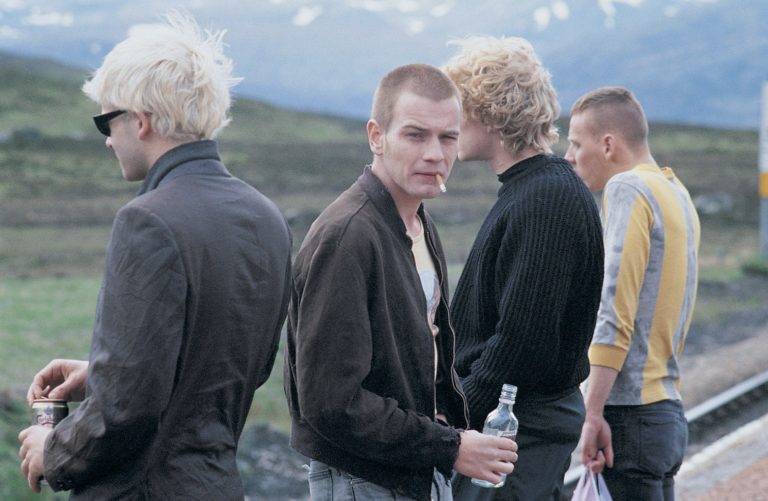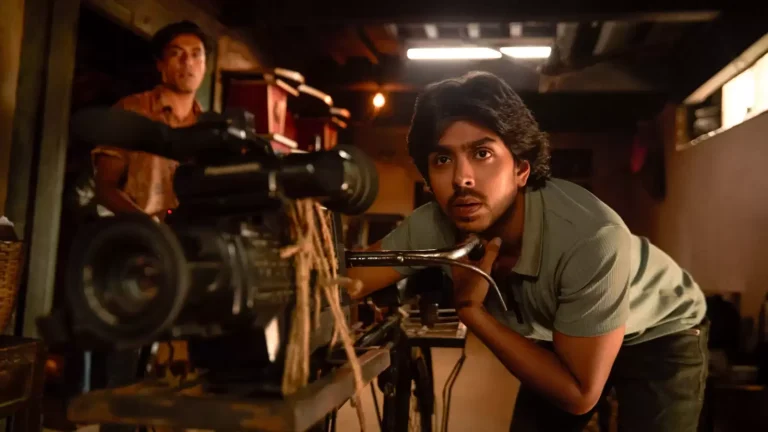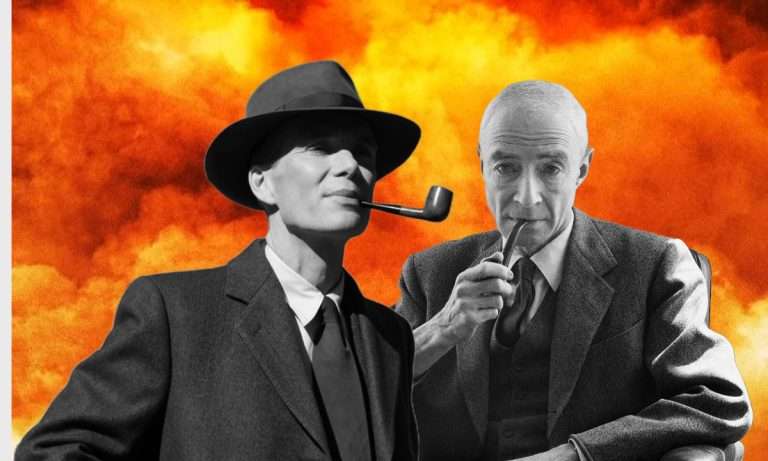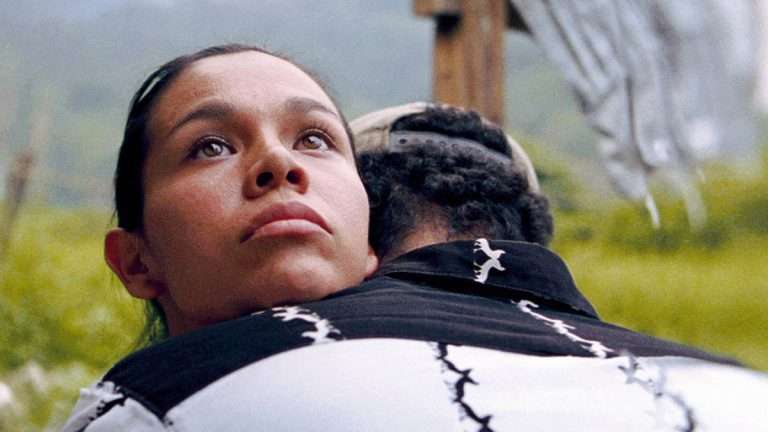This article examines how ‘Anatomy of a Fall’ skillfully delves into the complexities and challenges of portraying reality on screen.
“If a tree falls in a forest, and there’s no one around to hear it, does it make a sound?”
“The limits of my language mean the limits of my world.”
— Ludwig Wittgenstein
Werner Herzog likes to attribute a quote to French author Andre Gide to support his criticism of so-called objective storytelling: “I modify facts to such a degree that they resemble truth more than reality.”
There is no evidence, at least in the publicly available online sources, that Gide said so. It is quite possible that Herzog made it up. He has done it before. “Lessons of Darkness” is one example, as he smuggled in a quote, knowingly misattributing it to Blaise Pascal. I hope Gide never said anything like this, and Herzog indeed made it up, as by doing so, Herzog altered the facts, proving his point narratively and formally.
Justin Triet’s 2023 film “Anatomy of a Fall” begins with a discussion of the relationship between reality and fiction, fantasy and facts. “Do you think one can only write from experience?” a student asks Sandra Huller’s character, writer Sandra Voyteer, as she interviews her. Sandra responds by saying that for her, there is no way of knowing a character despite using a real person as a prototype in the creation process.
I see this sequence as a prologue that sets the tone for the rest of the film as it tells the story of Samuel, Sandra’s late husband, also a writer, who fell from a height and died, the investigation of his death, and court proceedings. As is the case with any kind of fiction, what we see here is not real. However, what makes this film interesting is how it plays with the form and its use of film language to speak about the imperfection of communication, whether in fiction or real life.
The scrupulously detailed screenplay, penned by Trie and Arthur Harari, provides many facts, which, in theory, should help the audience and characters of the film establish the causes of the character’s death. Despite this, thanks to the deliberately left-out details and carefully constructed narrative, no one who watches the film can say with absolute certainty what led to Daniel’s death, even after the titles start to roll. We want to know what happened, as it is human nature to establish the truth. Missing a small but crucial detail can paint a picture that is far from reality. What we suppose in such cases is not necessarily what really took place.
“Anatomy of a Fall” is a study of what happens when the facts we have at hand are not sufficient to see the whole picture, how we fill in the gaps with our predispositions, how we shape reality with our subjective experiences, and how we translate what we are presented with.
A scene that best illustrates this is the one where the court hears a ten-minute-long audio recording that portrays a conflict between Sandra and Samuel. It is worth noting that in this scene, the director decides to include not only the audio part of the conversation but also a visual element. So, unlike the juries, we hear and see a part of the conflict. But it is important that we are shown only part of it, as at the stage where the argument reaches its crescendo, the visual narration stops abruptly. Similar to the jurors, we hear only the audio part, meaning we can only imagine what happened between the spouses there.
What do we imagine when we hear the screams and noises? What do we imagine when we hear but do not see? How different can descriptions and evaluations by different people be in a scenario where both are presented with the same information? We do hear Sandra’s account of what happened, but it is important to note that there is a several-minute interval in the film before we listen to it. By giving us the time, Triet provides the audience with an opportunity to reflect, judge, come up with their own version of what happened, and believe in the story they want to believe in. Here, the information given to every person watching the film is the same, unlike personal experience and predispositions, which might differ in every individual case.
One of the best and best-known examples of how different interpretations can be is Akira Kurosawa‘s “Rashomon.” In this film, one specific happening is viewed through different lenses. Every witness to the incident tells their own version of what has happened. Their subjective account of what occurred is as different from each other narratively as it gets. The film is so influential that today, the Rashomon effect is actively studied in academia, be it in psychology, journalism, law, or history.
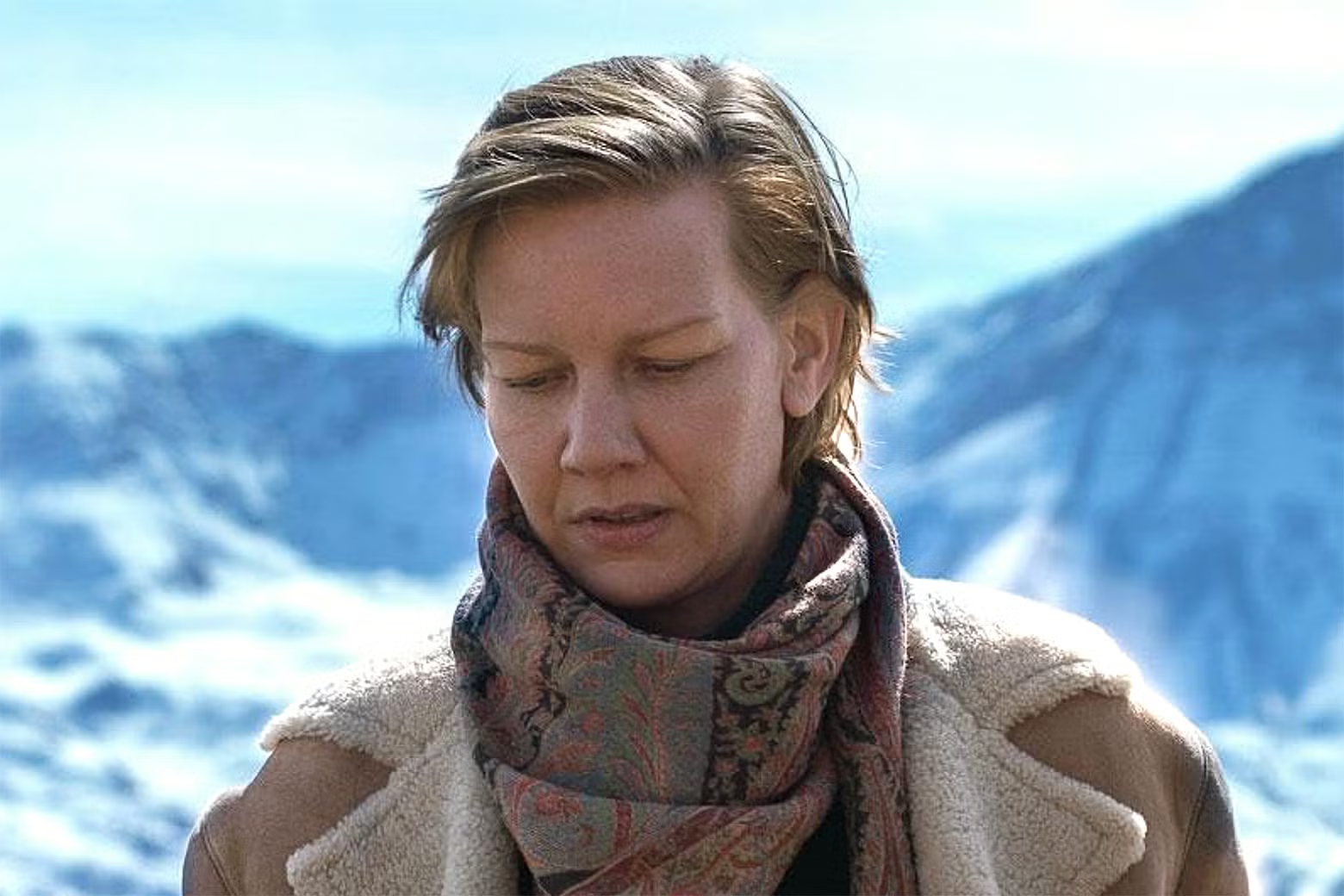
I think “Anatomy of a Fall” not only continues Rashomon’s legacy but also expands and explores the topic further. In both films, characters look at the world from different perspectives. In “Rashomon,” though nothing is hidden, what prevents the characters from establishing the “truth” is their subjective impression. However, in the case of “Anatomy of a Fall,” there are more obstacles to unveiling the curtain. Apart from the subjective experiences, there are different details missing, preventing us from seeing the bigger picture. This makes establishing the truth even more difficult.
Let’s go back to the quarrel sequence. Here, we are missing a crucial visual element.
Here is how Justine Triet comments on this scene and on the topic of the film.
“We wanted to have this relationship between sound and the lack of images that would allow us to make it visible to the audience that in the absence of image, fantasy comes in. Which is basically to say when there is a trace of truth left, it has to be filled with judgment and interpretation. And that becomes one of the ways to bring the point of the film home, which is to say that truth is very complex to be attained.”
In “Anatomy of a Fall,” Sandra speaks to her lawyer about the audio recording, and she, in her rightful comment, says that the episode does not portray reality but rather is only a portion of it. Emphasizing this portion, though, might lead to neglect of everything else that is important to the story and might paint a different picture. Her lawyer’s response is that he is not interested in what reality is and the only important thing is how others perceive Sandra.
This dialogue between Sandra and her lawyer is reminiscent of Otto Preminger’s 1959 film “Anatomy of a Murder.” In one of the scenes of this film, Paul Biegler, a lawyer played by James Stewart, reminds his client of the importance of public opinion in a rather brute fashion.
“Now, until this trial is over, you are going to be a meek housewife with horn-reemed spectacles. And you are going to stay away from men and juke joints and booze and pinball,” Biegler says.
In both films, lawyers shape opinions—an image that might help their clients win their cases. Thus, something that should, in theory, only be a legal matter becomes part of the media and fiction. To borrow a line from Triet’s film, “fiction can destroy reality.”
In one of the scenes of “Anatomy of a Fall,” the lawyer records an interview with Sandra. The goal of the interview is to create an image that will help his client win public sympathy. Here, he is not an interviewer but rather a director directing the interviewee with the aim of influencing a possible jury. This is not an interview documenting Sandra’s experience but rather fiction. This sequence brings up an important question: is documentary filmmaking really separate from fiction? If yes, to what degree? This episode is an example of how one can create a simulation in pursuit of a specific goal.
Another scene in the film shows a similar situation. The lawyer speaks about Sandra’s deceased husband, creating a very superficial picture of him, but by doing so, he attempts to win the jury over. It is clear to us as the audience that this is beneficial for the defense, but despite this, Sandra does not approve of such a depiction of her spouse and says that it has nothing in common with his real personality. Let’s go back to Otto Preminger’s “Anatomy of a Murder” to illustrate how difficult it is for the jury to make a fair judgment and how much it can be influenced by personal experience. A character called Parnell, who is an assistant to the lawyer, says in his monologue:
“Twelve people go off into a room: twelve different minds, twelve different hearts, from twelve different walks of life; twelve sets of eyes, ears, shapes, and sizes. And these twelve people are asked to judge another human being as different from them as they are from each other. And in their judgment, they must become of one mind – unanimous. It’s one of the miracles of Man’s disorganized soul that they can do it and, in most instances, do it right well. God bless juries.”
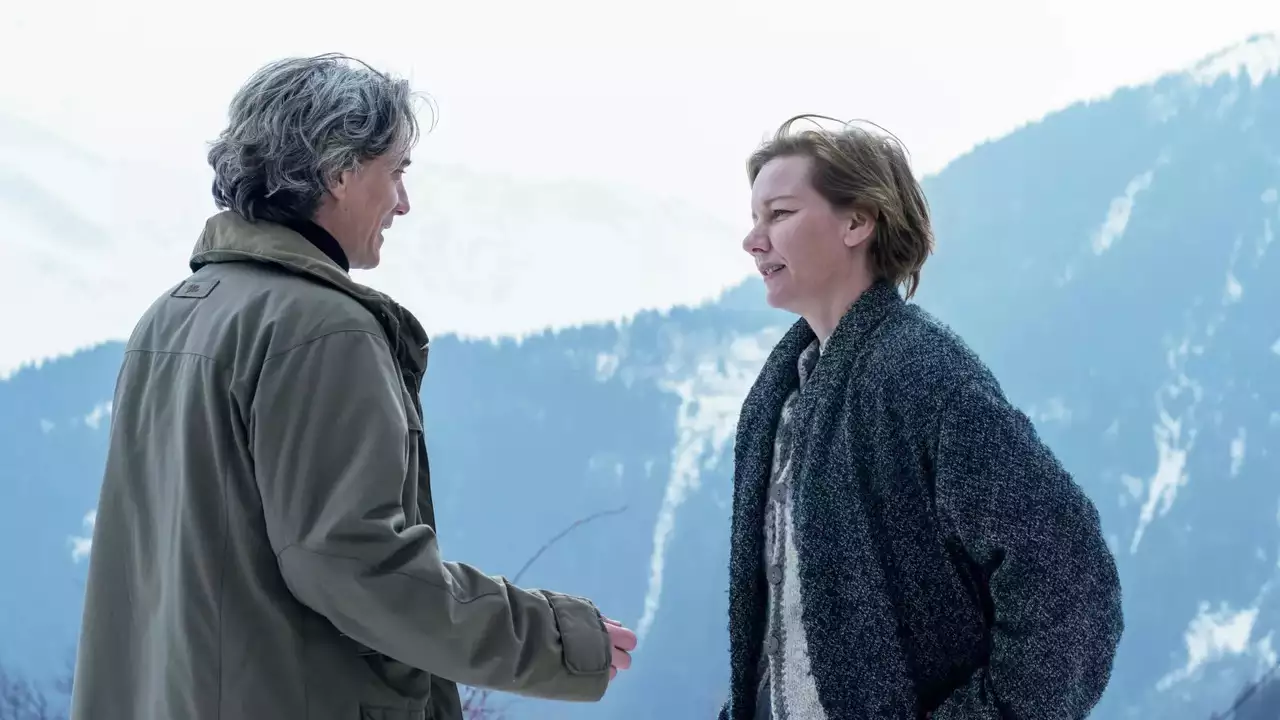
Both films stress the importance of subjective experience, not only for the jury but also for judges. In “Anatomy of a Murder,” the judge says, “One judge is quite like another. The only differences may be only in the state of their digestions or their proclivities for sleeping on the bench.” If you’ve seen “Anatomy of a Murder,” you know that this speech is used as an ironic device. In the case of “Anatomy of a Fall,” a comment on the importance of who is a judge is much more direct. “We have good news: this afternoon, the judge is not Silva, but Bolain,” one defense lawyer tells another.
In “Anatomy of a Fall,” we see subjectivity and predisposition over and over. The experts we see during the trial are one example. All of the conclusions they draw depend on their role in the trial; the judgment of the experts brought by the defense is the opposite of those put forward by the prosecution.
By all means, this does not mean that the experts are corrupt or that they lie. Their position on different issues is driven by unconscious bias. In circumstances where information is scarce, they choose “reality,” which, due to different reasons, goes in line with the answer they are expected to give. It is interesting that in both cases, we, as an audience, hear equal arguments. By consciously building such a narrative, the film’s creators do not want us, the spectators, to be swayed by one specific version of what caused the character’s death. This motive can also be traced in the neutral word used in the title of the film: “fall,” not “murder,” “suicide,” etc.
Among other notable scenes, there is one that stands out in Triet’s film when speaking about the use of film as a language. We see Daniel, the visually impaired, Sandra’s and Samuel’s son, giving a testimony. He is standing literally between the lawyer and the prosecutor. The position of the camera, which shows Daniel, shifts constantly. Still, the change of camera is driven not by a visual element but by the voice of either the lawyer or the prosecutor. Such a decision lets the audience experience the trial from Daniel’s perspective. Daniel is the character that drives the film; from his perspective, we follow the story from the moment Samuel’s body is found until the end of the story.
At the beginning of the film, Daniel says that he needs to have an answer to what happened. He tries to find it throughout the film but struggles to do so. Daniel does not rush to conclusions and tries to look at the case from different perspectives. This is some kind of fight where it is impossible to find one specific answer, but due to the human longing for an explanation, we can say that Daniel gives up and comes to terms with the explanation he finds most plausible—his father took his own life.
It is important to note that when he voices this version visually, we see his memory. His father talks to him about certain things, and the way Samuel talks makes Daniel think that this is a hint for future suicide. The visual part, though, is not followed by Samuel’s voice. It is Daniel’s speech that we hear. This striking choice by the director hints at Daniel making a subjective choice. Like anyone else, he believes what he wants to believe, something that feels most comfortable in the given moment. This is a simplified version of reality, which is why the version of the suicide, like any other version, is a speculation. Suicide is one of the possible versions of what really happened, but it is not a fact.
Another plot device that helps Triet and Harari expand the topic is language. The characters mostly communicate in a language that is not native to them—English. This is yet another obstacle that prevents the characters from communicating effectively. This is somehow a reversed version of the Tower of Babel; they speak a common language but still miscommunicate. The fact that a language cannot be a precise translation of reality has been described in works by different scientists, writers, and painters.
Scholar Alfred Korzybski, for instance, developed a theory of general semantics in the first half of the 20th century. This theory suggests that humans’ nervous systems do not have direct access to reality, and that is why our brains interpret the world according to our experiences. It is Korzybski who said that “the map is not the territory,” which illustrates the relationship between an object and a representation of an object. Rene Magritte’s painting, The Treachery of Images, can be seen as a visual version of this theory. Here, the pipe we see is nothing but a representation of the pipe and has nothing in common with the actual pipe apart from its representative characteristics.
Objects that represent and translate reality are ever-present in “Anatomy of a Fall,” be it cameras, sound recorders, paintings, etc. But what can be communicated through language, camera, sound recorder, or montage? What can a book tell, and what about a film or a song by 50 Cent, be it the version with lyrics or an instrumental one?
What can an essay communicate?
Is not this yet another interpretation of the film, an attempt to emphasize one specific topic of the film? Considering this, maybe everything said here is in direct conflict with what the film really tries to say. In the end, if we are to trust Orson Welles, “Tell it by the fireside or in a marketplace or in a movie. Almost any story is almost certainly some kind of lie.”

